

|
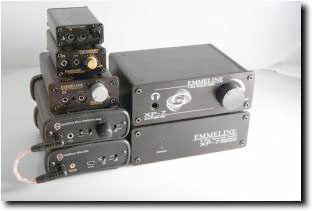 This review was written in May of 2007. I had purchased a Hornet headphone amp from Ray Samuels Audio, and through a fluke, had to wait for parts to be delivered before it could be shipped. Due to my inability to wait, I dropped a load of cash on a bunch of RSA amps because I couldn't wait for my Hornet to arrive. Details of my inability to wait are found in this humorous thread on head-fi: https://www.head-fi.org/forums/showthread.php?t=236462
This review was written in May of 2007. I had purchased a Hornet headphone amp from Ray Samuels Audio, and through a fluke, had to wait for parts to be delivered before it could be shipped. Due to my inability to wait, I dropped a load of cash on a bunch of RSA amps because I couldn't wait for my Hornet to arrive. Details of my inability to wait are found in this humorous thread on head-fi: https://www.head-fi.org/forums/showthread.php?t=236462
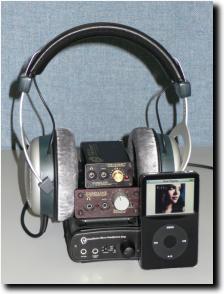 I have very eclectic tastes in music. I like just about everything with the exception of hard-core rap and some country music. For the most part I listened to the following while swapping between amps:
I have very eclectic tastes in music. I like just about everything with the exception of hard-core rap and some country music. For the most part I listened to the following while swapping between amps: 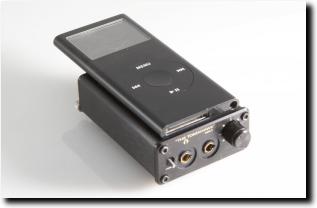 The Tomahawk (TH) is an awesome little amp with great sound and HUGE battery life. It runs on two AAA batteries and runs for literally hundreds of hours. The sound to my ears was the same as the Hornet, only just a bit less... "Hornaty". That is until I burned in the Hornet, at which point the Hornet pulled a way a bit more. Again, you'll be happy with the sound from the TH. You'll only know there's a difference if you hear the Hornet and the TH side by side. Even having both, while walking with the TH I never said to my self "I wish I brought the Hornet".
The Tomahawk (TH) is an awesome little amp with great sound and HUGE battery life. It runs on two AAA batteries and runs for literally hundreds of hours. The sound to my ears was the same as the Hornet, only just a bit less... "Hornaty". That is until I burned in the Hornet, at which point the Hornet pulled a way a bit more. Again, you'll be happy with the sound from the TH. You'll only know there's a difference if you hear the Hornet and the TH side by side. Even having both, while walking with the TH I never said to my self "I wish I brought the Hornet".
 The real problem with really small amps is the interconnects. The RSA tomahawk with an iPod Nano is an awesome combination, but the line out (dock) connectors just plain suck on the iPod because they're too damn big. I've made a slew of my own iPod dock connectors, and with something the size of the Nano, they ruin the portability of it all. The honest truth here is that if I'm going to jog/bike/work out with my Nano, I'm leaving the amp at home. It's hard to beat the Nano's size, and if I'm bouncing my fat ass on a treadmill, the last thing I need is an amp, no matter how small, bouncing with me. When an amp is made that is the same form factor as the Nano, we'll be in business. It's all about compromises. In the realm of exercising I'll give up sound quality for portability. That being said, while walking, the TH is just that much smaller than the Hornet, making it a more comfortable rig to jam in a shirt pocket. For me, the Hornet is small enough.
The real problem with really small amps is the interconnects. The RSA tomahawk with an iPod Nano is an awesome combination, but the line out (dock) connectors just plain suck on the iPod because they're too damn big. I've made a slew of my own iPod dock connectors, and with something the size of the Nano, they ruin the portability of it all. The honest truth here is that if I'm going to jog/bike/work out with my Nano, I'm leaving the amp at home. It's hard to beat the Nano's size, and if I'm bouncing my fat ass on a treadmill, the last thing I need is an amp, no matter how small, bouncing with me. When an amp is made that is the same form factor as the Nano, we'll be in business. It's all about compromises. In the realm of exercising I'll give up sound quality for portability. That being said, while walking, the TH is just that much smaller than the Hornet, making it a more comfortable rig to jam in a shirt pocket. For me, the Hornet is small enough.
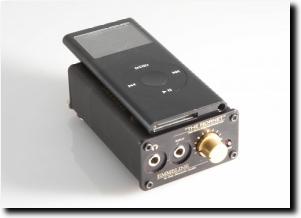 There's a reason everyone on head-fi raves about the Hornet. It's an awesome sounding amp in a very small package. It delivers - pure and simple. The Hornet is a similar size to the Practical Devices XM4, but the XM4 is a little thinner and longer. That's where the similarities end though, as the Hornet sound blows the XM4 away when it comes to sound quality. It also looks a lot more refined (because it is). Of course it does so at over 3X the price.
There's a reason everyone on head-fi raves about the Hornet. It's an awesome sounding amp in a very small package. It delivers - pure and simple. The Hornet is a similar size to the Practical Devices XM4, but the XM4 is a little thinner and longer. That's where the similarities end though, as the Hornet sound blows the XM4 away when it comes to sound quality. It also looks a lot more refined (because it is). Of course it does so at over 3X the price.
 I'm also here to tell you that burn-in is not a myth. Taking the advice from head-fi, I set to burn in my Hornet for 400 hours. For those of you who hate math, that's 16.6 days of use non-stop. Instead of plugging it into a CD and letting it repeat forever (no CD player remember), I took it with me everywhere I went, and plugged it into my PC at night. This allowed me to do two things. First, I got a feel for how long the battery would last. Second, I got a feel for how difficult it would be to swap batteries when the need arises.
I'm also here to tell you that burn-in is not a myth. Taking the advice from head-fi, I set to burn in my Hornet for 400 hours. For those of you who hate math, that's 16.6 days of use non-stop. Instead of plugging it into a CD and letting it repeat forever (no CD player remember), I took it with me everywhere I went, and plugged it into my PC at night. This allowed me to do two things. First, I got a feel for how long the battery would last. Second, I got a feel for how difficult it would be to swap batteries when the need arises.
 Probably my favorite sounding amp in the bunch of "real" portables (I don't consider the XP-7 to be really portable). "Silky" is the best word I can come up with. Everyone at work (non-audiophiles all of them), picked the SR-71 every time (excluding the XP-7) regardless of cans used. I really can't stop gushing about this amp's sound. If it had AC it would be perfection for me, but alas, it does not. For me, to compensate for the lack of AC power, I'd need to invest in 4 9V rrechargeablesand a charger. For LiPo batteries this runs about $100 from Thomas Distributing (today being May 2007). That's $100 over the price of the SR-71, which isn't cheap. Still, battery life is surprisingly good. I've used the SR-71 regularly for almost three weeks while testing (probably 1-3 hours each weekday), and haven't killed the two alkalines in it yet.
Probably my favorite sounding amp in the bunch of "real" portables (I don't consider the XP-7 to be really portable). "Silky" is the best word I can come up with. Everyone at work (non-audiophiles all of them), picked the SR-71 every time (excluding the XP-7) regardless of cans used. I really can't stop gushing about this amp's sound. If it had AC it would be perfection for me, but alas, it does not. For me, to compensate for the lack of AC power, I'd need to invest in 4 9V rrechargeablesand a charger. For LiPo batteries this runs about $100 from Thomas Distributing (today being May 2007). That's $100 over the price of the SR-71, which isn't cheap. Still, battery life is surprisingly good. I've used the SR-71 regularly for almost three weeks while testing (probably 1-3 hours each weekday), and haven't killed the two alkalines in it yet.
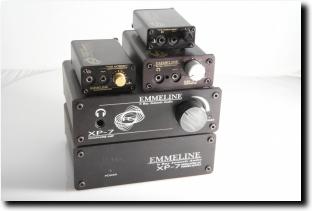 This amp is in a different class than the others. Mine came with both the stock OPA627 opamps and AD797 opamps. One of the things I don't fully understand is how an amp can change the perception of how big the empty room in my head is. This amp has a HUGE sound. After listening to the smaller amps all day I come home to this and every day I say "wow!". My Beyer DT880s really shine with this amp. Where I thought the Beyers were to bright (ow - my knuckles!) with the rest of the amps, the mix of Beyer sound with XP-7 sound is wonderful. This amp changes the way all my cans behave when compared with the smaller amps.
This amp is in a different class than the others. Mine came with both the stock OPA627 opamps and AD797 opamps. One of the things I don't fully understand is how an amp can change the perception of how big the empty room in my head is. This amp has a HUGE sound. After listening to the smaller amps all day I come home to this and every day I say "wow!". My Beyer DT880s really shine with this amp. Where I thought the Beyers were to bright (ow - my knuckles!) with the rest of the amps, the mix of Beyer sound with XP-7 sound is wonderful. This amp changes the way all my cans behave when compared with the smaller amps.
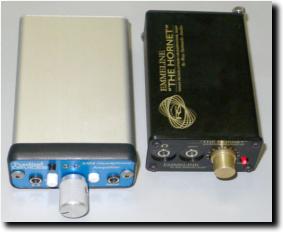 My initial impressions of the XM4 can be found here: https://www.head-fi.org/forums/showthread.php?t=235604 Those impressions still stand. The fact the Practical Devices has come forward and offered a free upgrade to the jack problem is impressive. Still, it simply cannot compare with the RSA stuff. Then again, it's not meant to. Though it is similar in size to the Hornet, it cannot compete in the sound department, which is why it gets a 20:80 sound:portability ratio.
My initial impressions of the XM4 can be found here: https://www.head-fi.org/forums/showthread.php?t=235604 Those impressions still stand. The fact the Practical Devices has come forward and offered a free upgrade to the jack problem is impressive. Still, it simply cannot compare with the RSA stuff. Then again, it's not meant to. Though it is similar in size to the Hornet, it cannot compete in the sound department, which is why it gets a 20:80 sound:portability ratio.
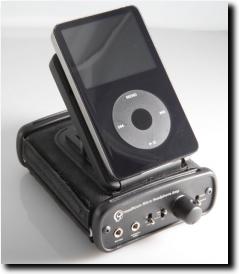 This was my first headphone amp and I love it. Mine has the '06 desktop module and is well burned in. If I had to compare it with any of the RSA amps, it would be the SR-71. This amused me, because I was gushing about how great the SR-71 was, and found a pretty close sound in the amp that sat quietly on my desk while I went nuts looking for better amps. Some have challenged my saying they sound similar, and that's great - we all hear differently. Still, to me, this amp sounds awesome AND it runs on AC power. It doesn't charge batteries, but I still get months from a pair of 9V because I run on AC 90% of the time.
This was my first headphone amp and I love it. Mine has the '06 desktop module and is well burned in. If I had to compare it with any of the RSA amps, it would be the SR-71. This amused me, because I was gushing about how great the SR-71 was, and found a pretty close sound in the amp that sat quietly on my desk while I went nuts looking for better amps. Some have challenged my saying they sound similar, and that's great - we all hear differently. Still, to me, this amp sounds awesome AND it runs on AC power. It doesn't charge batteries, but I still get months from a pair of 9V because I run on AC 90% of the time.
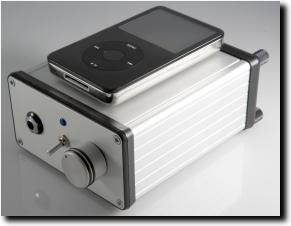 https://tangentsoft.net/audio/pimeta/
https://tangentsoft.net/audio/pimeta/| Home while writing/working: | 100:0 |
| At work while working: | 80:20 |
| Mowing/Working outside: | 50:50 |
| Walking: | 50:50 |
| Exercising | 10:90 |
| RSA Tomahawk: | 40:60 |
| RSA Hornet: | 50:50 |
| RSA SR-71: | 70:30 |
| RSA XP-7: | 90:10 |
| PD XM4: | 20:80 |
| Headroom Micro: | 75:25 |
| Home while writing/working: | 100:0 - RSA XP-7 (90:10) |
| At work while working: | 80:20 - Headroom Micro (75:25) or SR-71 (70:30) |
| Mowing/Working outside: | 50:50 - RSA Hornet (50:50) |
| Walking: | 50:50 - RSA Hornet (50:50) |
| Exercising | 10:90 - No amp |
| Source: | PC (FLAC w/Foobar2000) |
| IC: | DIY RCA S/PDIF w/ LOK connectors |
| DAC: | Lavry DA10 DAC |
| IC: | DIY Jena XLR-RCA w/Neutrik connectors |
| Amp: | RSA XP-7 |
| Cans: | Senn HD-650 & Beyer DT880 |
| Source: | iPod 8G Nano or iPod 80G 5.5G Rockbox |
| IC: | DIY line out dock w/Jena wire and Switchcraft or Neutrik plugs |
| Amp: | RSA SR-71 or Headroom Micro |
| Cans: | Senn HD-580 w/ 600 grilles, 650 cables & Jena DIY 1/4 - mini adapter |
| Source: | iPod 8G Nano |
| IC: | DIY line out dock w/Jena wire and Switchcraft or Neutrik plugs |
| Amp: | RSA Hornet |
| Cans: | Etynomic ER4P |
| Back to: GAD.net Newf.net | Email: gad@gad.net | Copyright ©1997-2017 Gary A. Donahue |